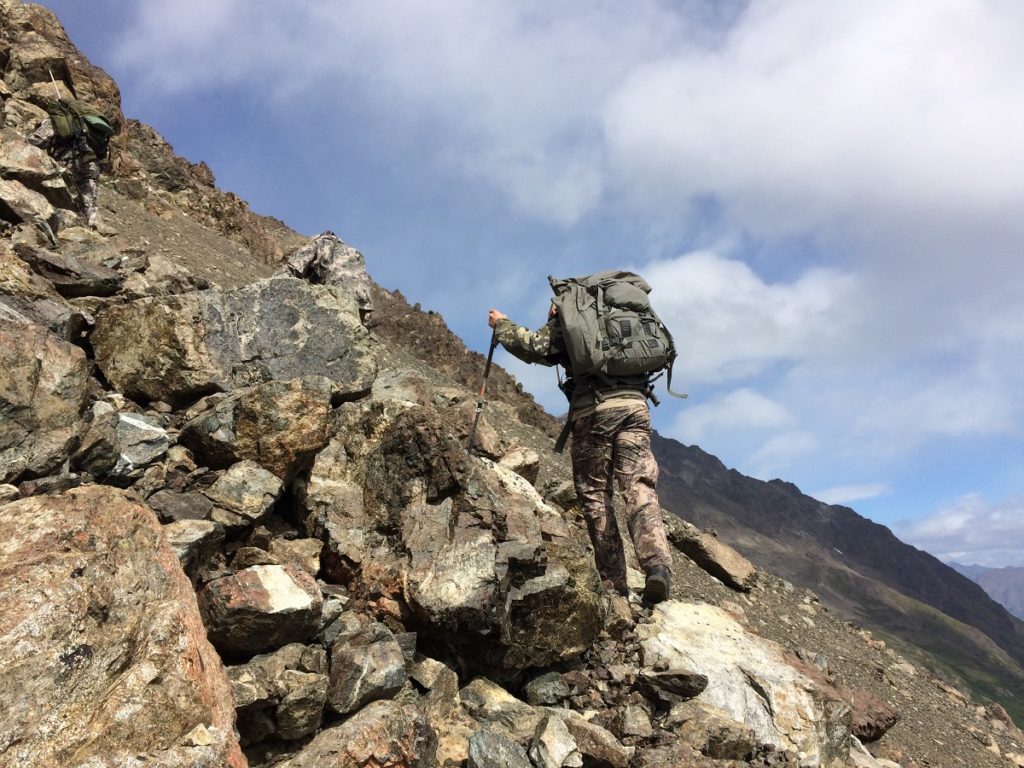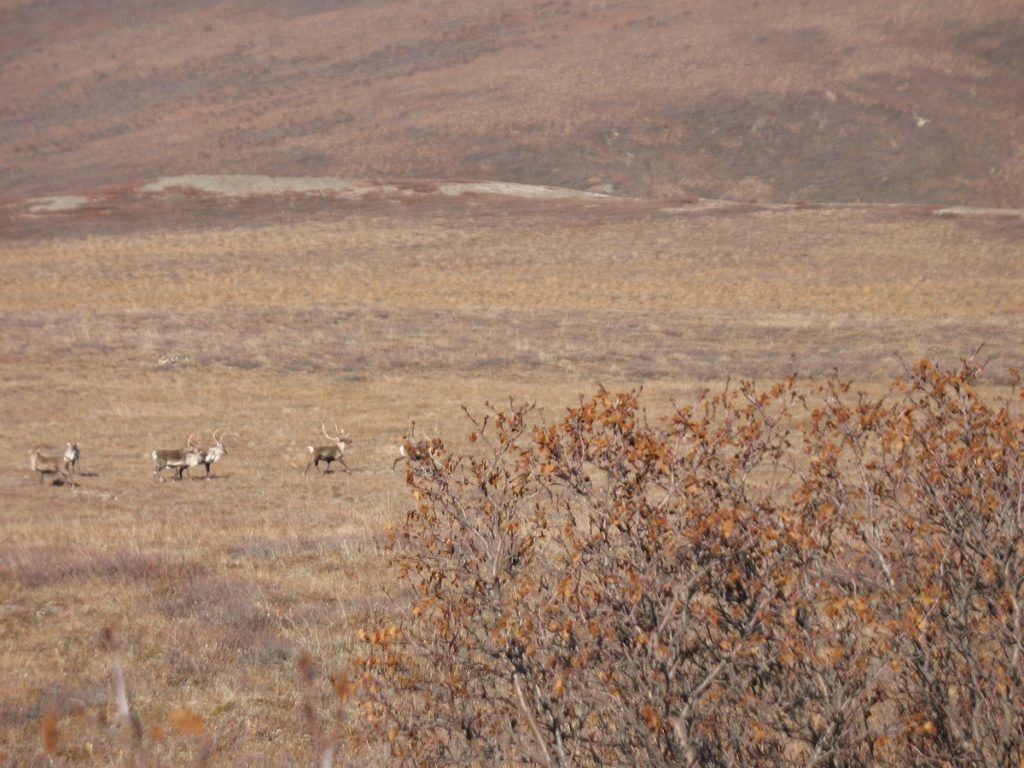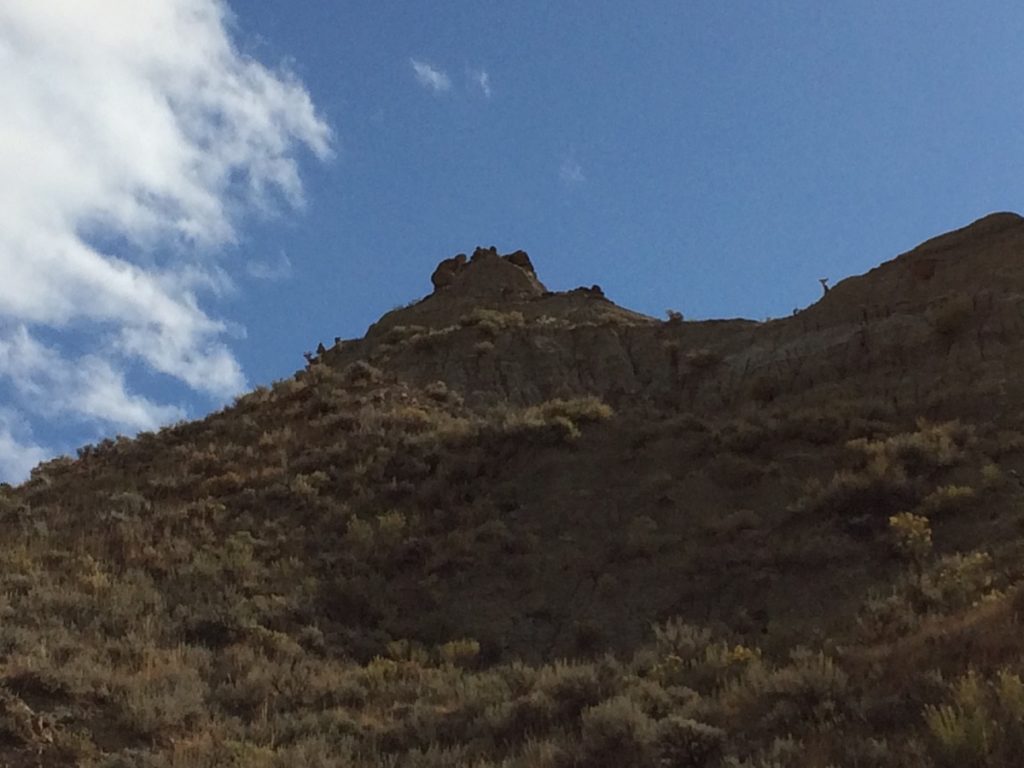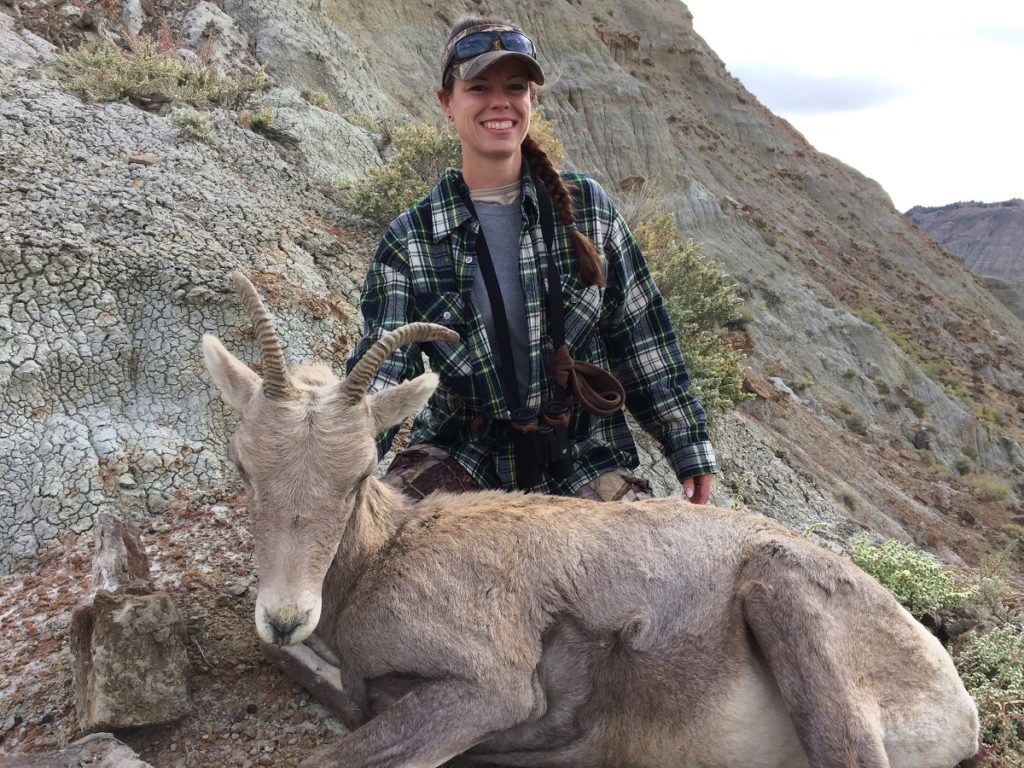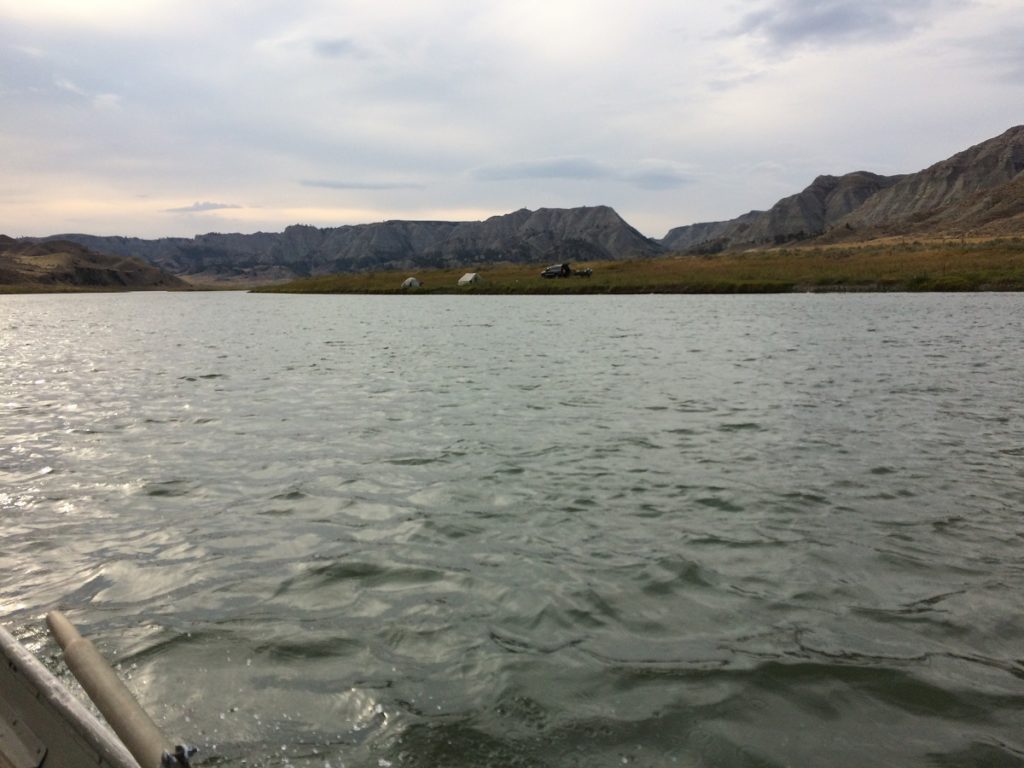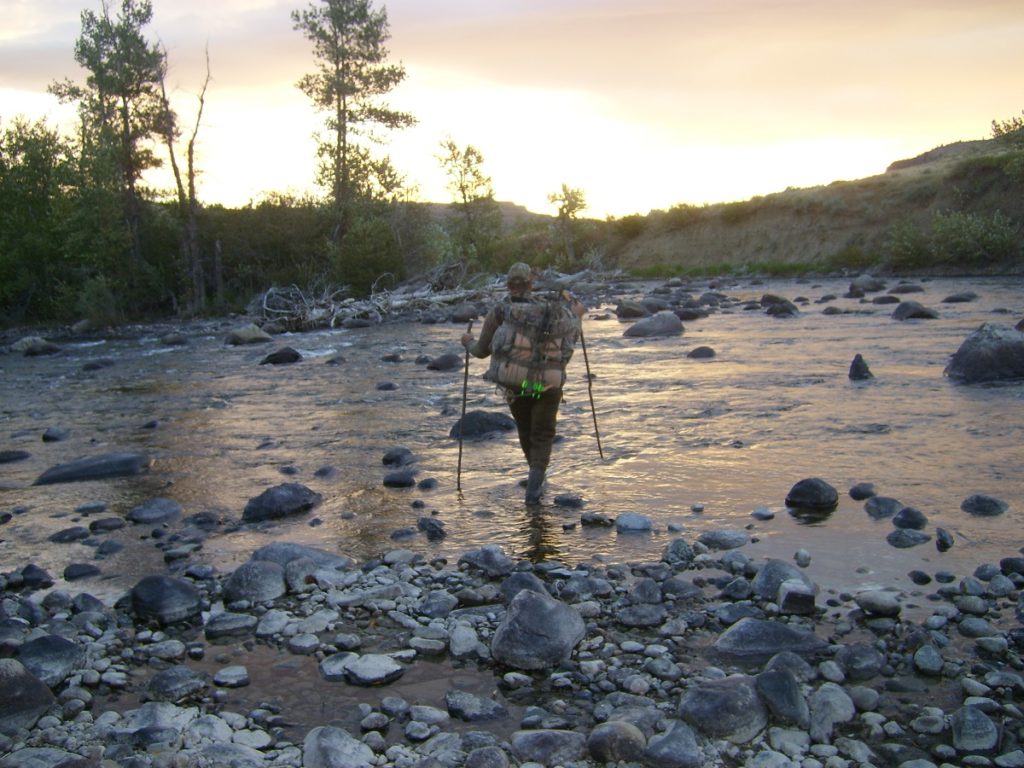In the first installment of this series, I wrote about hunting out West’s unique opportunities and one-of-a-kind challenges that hunters may face. The situations that present themselves can be classic risk versus reward. Jose Ortega y Gasset, a philosopher and well-known hunter said, “Effort is only effort when it begins to hurt.” Hunters are well aware that the effort—or risk—invested in a hunt generally equates to the reward that’s being sought. Don’t judge too harshly as I share these experiences, hindsight being 20/20 and all that.
Mountain Goat Hunt
Ever since I was a boy and I saw my first mountain goats perched up on a craggy cliffside, I was enthralled with these animals. Where they lived spoke of an immense challenge if a hunter was lucky enough to draw a tag. Fast forward fifteen years later and I had a chance in my home state of Montana to pursue these creatures on their home turf. I excitedly started to make plans with my father-in-law and dad. It was a bit of a challenge to get our schedules to mesh but we managed to carve out four days to hunt. It was shorter than I had wanted it to be but a one-month-old son and a new job required more time at home than normal that year.
We camped at a well-used trailhead and rode horseback into the area early every morning. The bears were thick in those mountains so it was worth the extra saddle time for a good night’s sleep. After several days of putting lots of miles and elevation on the horses, I connected on a goat in an alpine basin. The skinning was completed and we loaded the meat and hide onto a pack horse we had led down into the bowl.
As we started back up, everyone’s legs were burning and quivering after the exertion of the days of hunting, including the stock. The horse made it halfway up the avalanche chute we were traversing, stopped, and as his rear end locked up, he went over backwards, pulling my father-in-law with him. They piled up against a rock after several cartwheels. We got them untangled and stood back up. Amazingly, nobody was hurt.
When Gasset made the quote I used in the opening paragraph, I doubt he was equating effort to the physical pain of being rolled down an avalanche chute. Regardless, it was a wakeup call; we had pushed past the safe point of the risk/reward paradigm and ventured into unnecessary risk. We should have heeded the warning signs of overexertion and stopped for a while to regroup and enjoy what had just transpired. Thankfully we all walked out under our own power that evening with nothing more than a story to tell.
Bighorn Ewe Hunt
My wife, Jamie had several bonus points in Montana for sheep and she had expressed an interest in getting to hunt one sooner rather than later. She was content with a ewe if she could draw one so she put her name in the hat. Several months later, with a tag in her pocket, we were setting up our camp and making a plan for the morning. My belief in Gasset’s “effort has to hurt if it can be called effort” reared its head. I planned to float downriver a couple of miles, getting the wind to our advantage, still-hunt upriver then circle back to the boat.
Fast forward to mid-morning the next day, we crossed coulees and ridges perpendicular to the river, up, down, and up again for hours without seeing a ewe. I was at a loss. I definitely felt like we were putting in the effort. My scouting and research had made the spot we were in seem like a slam dunk. With no fresh sign or sheep sightings, we made our way back to camp to reevaluate for the evening hunt.
After talking through the options, we decided to forego the boat and walk from the road. I was hesitant, thinking we were wasting our time hunting such an accessible spot. Surely the pressure from other hunters would have the sheep pushed back into draws and coulees far from the road system. But, we had tried my idea and, with nothing to lose, we headed out.
That afternoon, as we took pictures of my beaming wife and her sheep, I shook my head and smiled. Sometimes all the effort you think a hunt is going to require isn’t needed. You just need to accept and appreciate those rare occurrences.
Archery Elk Hunt
Jamie had drawn an incredible elk permit her first year of applying. After the shock wore off, a good friend of mine who had drawn the permit a previous season took us out, showed us the area, and introduced us to some landowners who were willing to let us hunt.
The ranch we had permission on had two other hunting parties on it for opening week. We all had a meeting with the rancher and determined where we all would hunt to not get in each other’s way. As luck would have it, there was a group of bulls that were crossing a hay field at first light and moving up into some timber to bed on our area of the ranch. There were several good bulls and one that was a no-brainer opening day elk. We finished scouting in the late summer and armed with as fresh of intel as we could get made an opening morning plan.
We were in the timberline while it was pitch black and as the sky lightened in the east we could make out the shapes of the bulls coming towards us across the hay flat. I couldn’t believe it; the plan worked to perfection as the bulls closed the distance. I caught a movement at the fenceline that paralleled the elk’s path (coincidentally the boundary that was agreed upon by the rancher, other hunters and us) and saw a camo-clad figure trying to outpace the bulls. I was in disbelief as the hunter ran out of cover but kept coming, crossing the fence and spooking the bulls out of the meadow. So long summer pattern!
That day of hunting didn’t end well for anyone. Not only did nobody get an elk shot, they ran onto neighboring property that no one could hunt. My friend and I left Jamie at the pickup and went and spoke to the other hunter, red-faced and exasperated, but the damage was done.
The take-away from that day was hard to swallow, but as hunters, we have a moral code that we should uphold for ourselves and each other: Stick to your word. If somebody is working a group of animals, wish them luck and watch from afar. “Effort is only effort when it begins to hurt” shouldn’t mean harming fellow sportsmen and women’s chances in the field.
Effort is the yardstick that can push us as hunters to greater and greater achievements in our hunting careers. Challenging ourselves to new goals and working to achieve them is a big part of what makes being in the outdoors so rewarding. Preparedness and guts can take an average day of hunting and turn it into something special. Conversely, too much effort at the wrong time (mountain goat and ewe hunt) or effort channeled in the wrong direction (Jamie’s elk hunt) can take a good day in the field and add unneeded headaches for everyone involved. Hunt smart and hunt safe.


